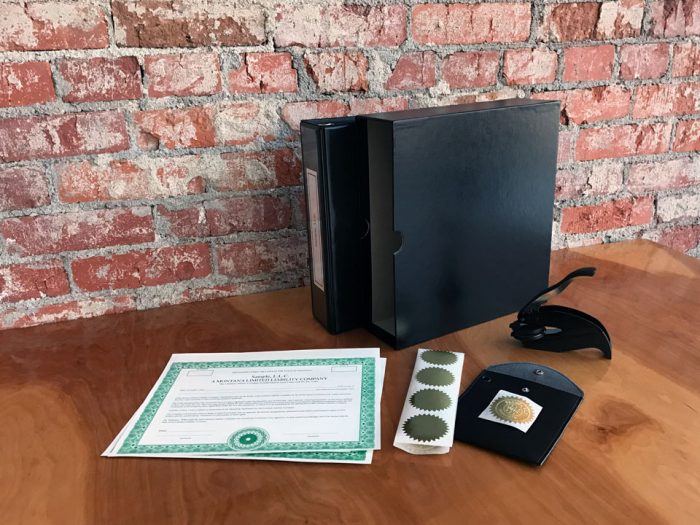A Guide to Professional Business Entities
What is a Professional Business Entity?
A professional business entity is a modified version of either a Professional Limited Liability Company (PLLC), Professional Corporation (P.C. or PA), or professional partnership (PLLP, PLP, PLLLP) in which service providers can only be professionals such as doctors, lawyers, architects, and other professions that require licenses and certifications. In some states, doctors, lawyers and other professionals are not allowed to practice under a normal LLC or corporation. The thought behind this type of business entity mandate is to help provide a clear distinction as to the types of services these entities can offer and trying to prevent those without the proper certifications and licenses from profiting off these types of entities.
History of Professional Corporations, PLLCs, and Professional Partnerships
The thought of doctors and lawyers being protected under traditional asset limited liability protections of corporations and LLCs hasn’t always been popular. The idea of asset protection and the public need to hold these types of professions accountable for malpractice seemed at odds with each other. Before the creation of these professional entities, many doctors, lawyers, and other professionals weren’t allowed to incorporate their practices. But with the introduction of professional entities, these practices have provided a path to allow a balance between accountability and allowing these professionals the asset protection they deserve. Many states now require professionals to use these professional entities if they are going to incorporate or organize their businesses as an LLC or partnership.
Professional Entity Liability Protections
Professional entities (PLLCs, P.C.s, PLLPs, PLPs, and PLLLPs) protect members, shareholders, and partners from business debt and lawsuit liabilities. However, professional entities do not protect doctors, lawyers and others from their own malpractice. In some cases, depending upon state law and how the company is structured, professional business entities can protect a doctor’s or lawyer’s assets from their partners’, members’, or associates’ malpractice or misdeeds, but it will not save them from their personal wrongdoing. Malpractice insurance is the only thing that can help an individual from their own malpractice. In the case of someone slipping and falling on ice outside the office, fine, the entity will cover their assets. But the entity will not cover against a surgery gone wrong or the mishandling of a case.
Professional Business Entity Definitions |
|
|---|---|
Professional Corporation (P.C.) |
|
| Ownership A professional corporation is a corporation which restricts ownership shareholder rights to those of licensed professionals of the same practice. |
|
| Tax structure C-corp status by default, however, if there are fewer than 35 shareholder, it can be taxed as an S-corp. |
|
| Limited Liability Provided to all shareholders |
|
Professional Limited Liability Company (PLLC) |
|
| Ownership Members are restricted to licensed professionals of the same practice |
|
| PLLC Tax Structure Taxed as a pass-through entity by default; can select to be taxed as S-corp |
|
| Limited Liability Provided to all members |
|
Professional Partnerships (PLLPs, PLPs, PLLLPs) |
|
| Ownership Partners must be licensed practioners |
|
| Tax Structure Taxed as pass-through entities; profits pass to partners as personal income |
|
| Limited Liability Granted only to limited partners; all partners in an PLLP |
Professional Business Entity Formation
Forming a professional corporation, PLLC, PLLP, PLP, or PLLLP relies primarily on the same fundamentals of forming a typical business entity with a few minor exceptions:
- Select a business name
All secretaries of state have online databases where you can search for an available name. Depending on the type of entity you form, you’ll need to add a specific name ending such as P.C., PLLC, PLLP, etc. You may also be required to indicate your profession in the business name, like “Johnson and Johnson, Attorneys at Law, PLLC” - Choose your entity
For a typical business, you would start by analyzing which entity offers the business plan the most advantages, but you may be limited by your state’s professional business entity options. Many states only have professional corporations. Some state offer professional associations, which are similar to corporations. For all state specific professional entity requirements, see the state-by-state guide to professional entities. - Obtain state licensing board approval
Secretaries of state may require you to provide copies of your credentials when forming a professional business entity. All professionals forming the company must be of the same profession. The licensing board may also be required to approve your formation documents before filing with the state. - Submit completed formation documents to the state
After receiving copies of licenses and approval from your certification board, you can complete the formation paperwork and submit it to the state. The entity will become active once the paperwork has been processed. For an outline of how to complete formation paperwork, see the LLC page.
Professional Entity Corporate Supplies:
Legal forms, Binders, Certificates, Bylaws and Minutes
We do not currently offer formation service, however, we do provide high-end business kits for professional entities.
Professional Corporation Kit (for profit company)
Each Professional Incorporation Kit is comprised of:
- Black calf vinyl 2 inch ring binder and slipcase
- By-laws, minutes, and resolutions package hard copy
- Six tab divider set
- Printed stock certificates (20) and full page stubs
- Stock transfer ledger
- Tax forms for employer ID number and S Corporation
- Blank bond paper
If you have not filed Articles of Incorporation, we will provide
the proper forms by mail along with instructions, state fee required
and address for mailing to your Secretary of State. When the
“filed” articles are returned to you, mail or fax a copy to us
and your kit will be sent same day USPS.
Your Cost: Starting at $90.00 with Embossing Seal / $80.00 without Embossing Seal
